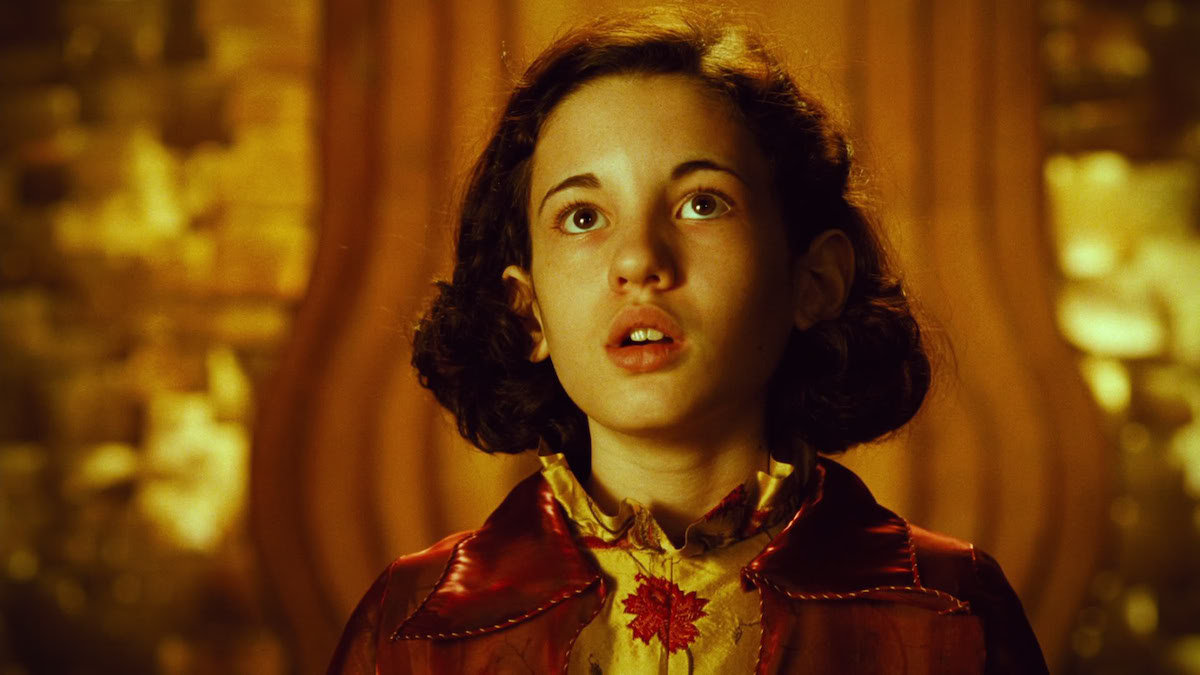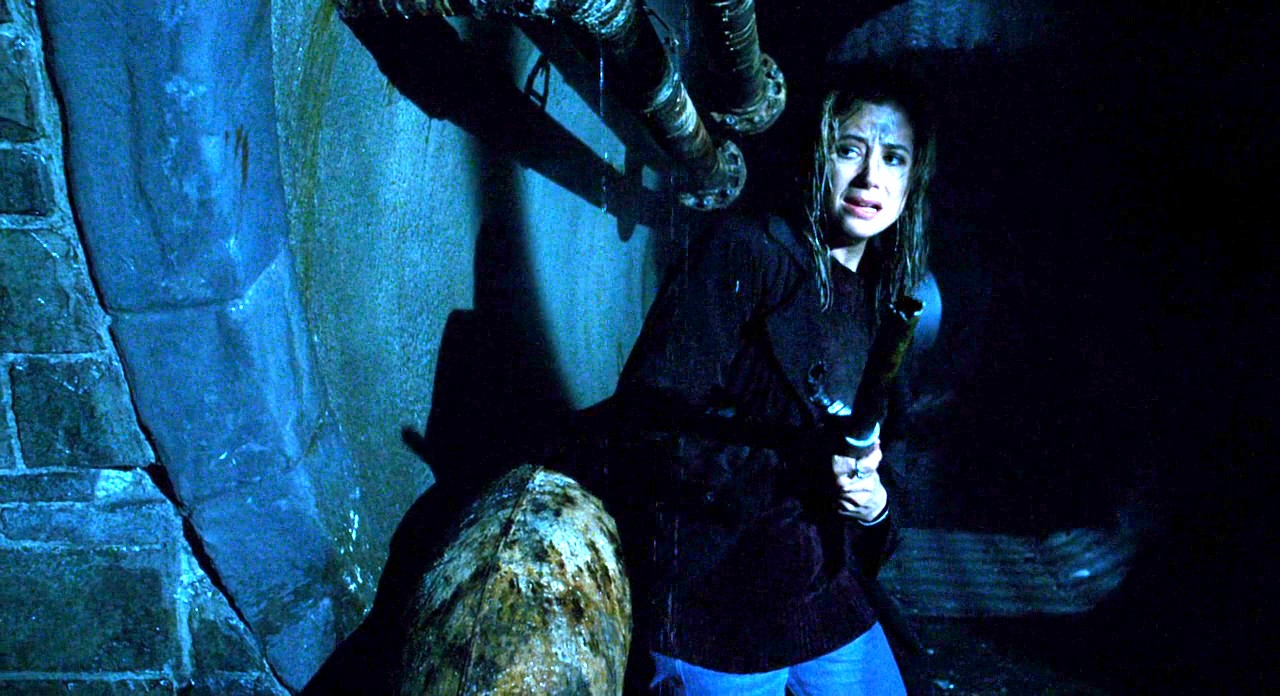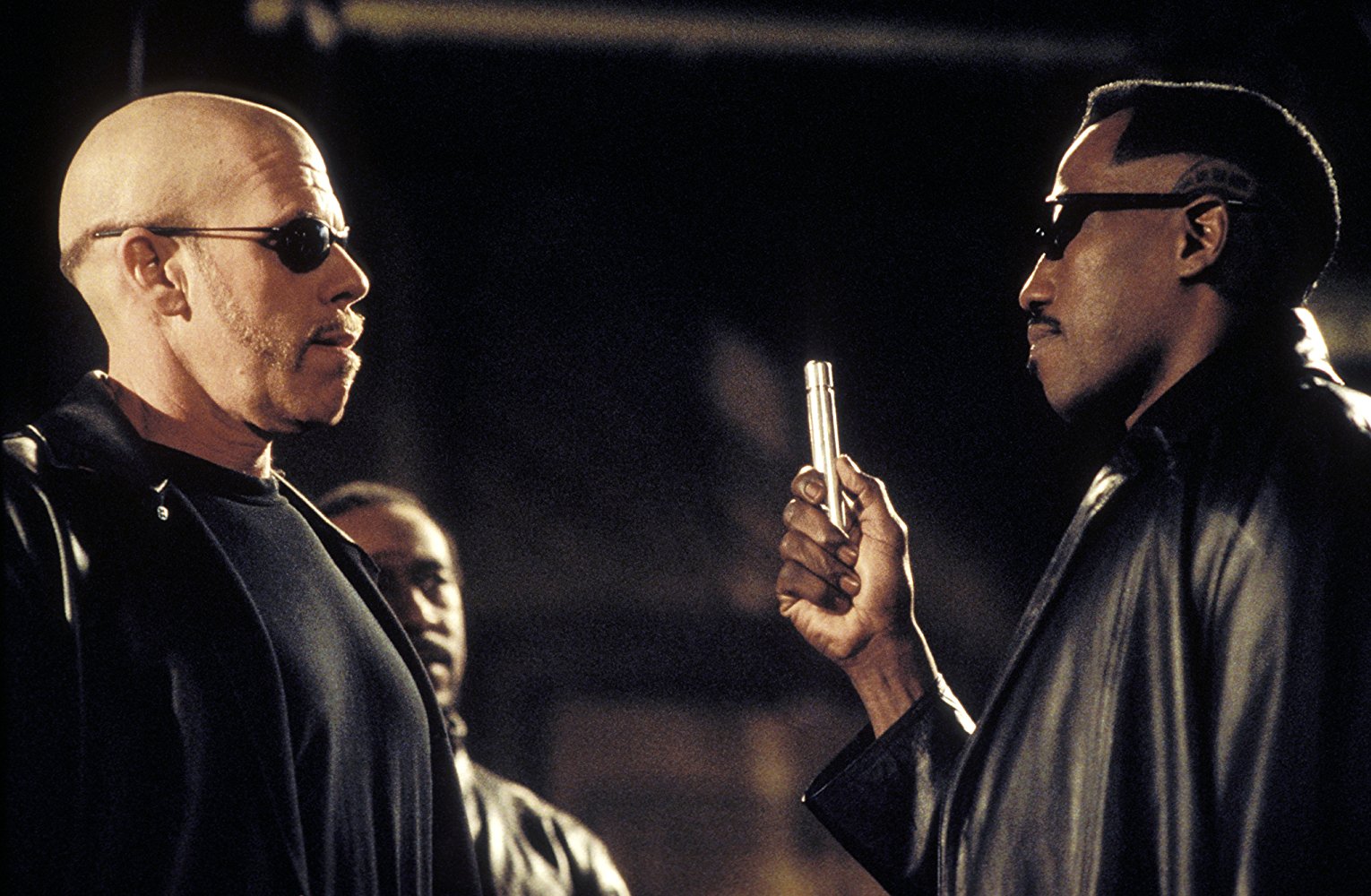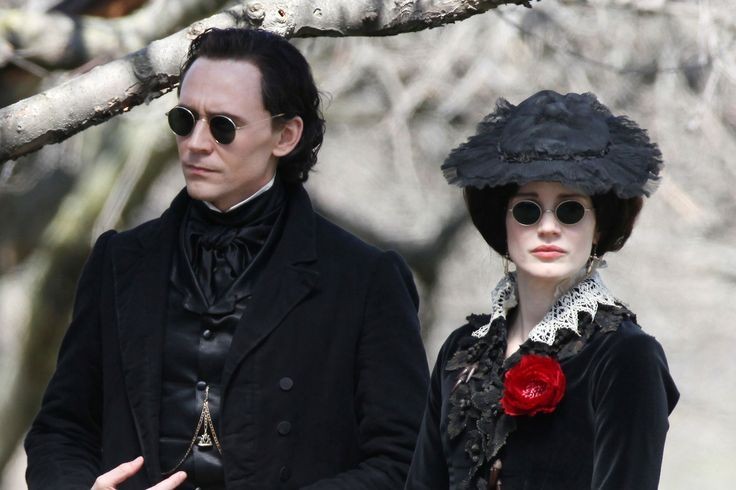
Gothic, mythological worlds. Fairy tales and bizarre monstrosities. Gorgeously ornate set designs. Religious undercurrents and outcast heroes. Mexican fantasy horror icon Guillermo del Toro is not only known for sharing an obsession for the grotesque, the imperfect and misunderstood, but also for the empathetic, immersive experiences his conveys through their dynamics.
Since his 1993 feature debut Cronos all the way to his upcoming The Shape of Water starring Sally Jenkins and Michael Shannon, del Toro has displayed a specific, visually staggering style that walks a strict line between fantasy and the grotesque. Contemporary icons such as Steven Spielberg, James Cameron, Peter Jackson, the late film critic Roger Ebert, and many more hold del Toro one of the most talented filmmakers of this generation.
Despite being considered one of the most prominent figures in modern fantasy horror, del Toro’s repertoire does not fit the conventions of the traditional horror genre. Films like Cronos, The Devil’s Backbone, and Crimson Peak treat horror as an emotional tool to convey atmosphere and themes about human nature rather than outright horrifying stunts.
Throughout his career, del Toro has been a prolific producer in acclaimed and commercially successful films such as The Orphanage (2007), Puss in Boots (2001), and Mama (2013), as well as a writer-producer credit for Don’t Be Afraid of the Dark (2011), but for purposes of this list, we will focus solely on writer-director role in feature films.
Known for producing mainstream American superhero and sci-fi/horror blockbusters, as well as Spanish-language atmospheric dark fantasies, in order to consolidate the assessment towards the Mexican writer-director’s oeuvre, we will focus on the balance between visual ingenuity, atmospheric character and narrative development.
Altogether, this list does not intend to strike a definitive ranking, since as the set criteria suggests, the case can be made for an entry to be “above” or “below” others. What it does strive to achieve, is both an overview, discussion and reflection of the thematic, technical and artistic qualities that grant del Toro his stylistic flair. Enjoy.
9. Mimic (1997)

“I have a sort of a fetish for insects, clockwork, monsters, dark places, and unborn things.”
-Guillermo del Toro
Have you ever wondered if evolution is the medium through which God expresses favor of a species over the other? A both Darwinian and divine intervention that inflicts punishment on whomever dares to meddle with its course? This is what del Toro’s sophomore sci-fi horror piece attempts to unravel before suffering an abrupt mutation from promising, shadowy atmospheric horror piece to derivative pure shock creature flick.
After a brilliant recreation of Se7en’s opening titles by its very own Kyle Cooper, Mimic locates in Manhattan, where in order to stop the outbreak of a cockroach-spread plague claiming the life of children, wunderkind entomologist Dr. Susan Tyler (Mira Sorvino as the Ripley-esque woman-in-jeopardy), devices genetically engineered insects, referred to as the “Judas Breed,” to mimic and then infiltrate the roaches’ habitat to neutralize the carriers of the disease.
Three years after her groundbreaking success, Tyler is leading a seemingly ordinary lifestyle married to colleague Dr. Peter Mann (Jeremy Northam) until a number of gnarly incidents and disappearances start turning up, and the Judas Breed, which were expected to die out after the first generation, are not only revealed to have survived, but have evolved into bigger, cunning predators. By this point, Mimic is reduced to a survival horror trope in the eerie abandoned subway tunnels, focusing on a notably dissonant, underwhelming group of characters, of which Giancarlo Giannini’s “the old ways vs a new, strange world” themed shoe shiner character (and subplot) stands out like a sore thumb.
Being waved as a disclaimer for its jarring tonal shifts is del Toro’s personal problems during production (his father was kidnapped for ransom during this period), on-set quarrels between the two leading actors, and most importantly, the disagreements del Toro faced against controversial producer Harvey Weinstein – then at the helm of Miramax Films – over the direction the then green Mexican director’s first studio film should take.
Originally intended to be a half-hour segment part of a horror anthology, Mimic’s artistic indecisiveness persisted through its multiple rewrites, all the way to its 97’ theatrical release cut by Weinstein, which trimmed down del Toro’s unconventionally atmospheric direction, and added extra segments (filmed by a second unit) focusing on traditional genre tropes such as jump-scares.
Although uneven, del Toro’s creature feast does succeed in revitalizing its B-horror roots through its craft of innovative designs, such as fashioning the underground tunnels as a hellish industrial hive, with walls hiding viscous Cronenbergian eggs, which altogether is awfully evocative of the spaceship in Alien.
Also, the concept of the creatures – hard-shelled mantis-like predators that use their skeletal legs as murderous sharp stakes – that possess the ability to disguise themselves as tall, slim, silent figures clad in trench coats in order to mimic humans is as unsettling as it is fascinating. This revelation attest to del Toro’s strong belief that what he fears is the horror of others as well; the ability to grasp universal fear and encapsulate it through new, horrid, and specific shapes.
Lastly, the prospect of a sci-fi spooker as entertaining and inventive such as Mimic, being considered del Toro’s “worst” or least noteworthy film attest to the Mexican horror master’s prowess as a filmmaker. Looking back, the fragmented Mimic serves as metamorphosing phase that mirrors del Toro’s transition to maturity between macabre designs and cerebral atmospheres.
As he puts it during a 2006 interview: “now when I look at Mimic, what I see is the pain of a deeply flawed creature that could have been so beautiful” (Sight and Sound; edited version in The Guardian). A film that remains memorable for some truly captivating ideas, that deserved to be properly nurtured.
8. Blade II (2002)

“In that, Blade II is very much like a rock concert… if it’s too loud, you’re too old.”
-Guillermo del Toro
Comic-book storytelling meets the highly acrobatic stunts of Hong Kong action cinema with a spice of a mad, repulsive game of Operation. Del Toro’s follow-up to the underrated 1999 vampire superhero film, continues its predecessor’s cult status through an unwavering commitment to high-speed choreographies, “sliced-n-diced” miasmic viscera, and the ingenuity of a Van Helsing-esque arsenal of vampire killing gadgets, that despite its over-the-top magnetism, viewers not familiarized with the comics or the subgenre might consider too much to handle.
Picking up after the events of the original, Blade II follows the eponymous half-human, half-bloodsucker anti-hero (Wesley Snipes carrying himself with ironic severity), as he comes upon a shaky alliance with vampire kingpin Damaskinos (Thomas Kretschmann in a throwback to Nosferatu), in order to fight a common enemy: a new breed of ghoulish vampires, called the Reapers, who not only improve upon the weaknesses of its ancestors, but feast on both humans and vampires.
Along with the plot-resurrected father figure Abraham Whistler (Kris Kristofferson) and brash weaponsmith Scud (Norman Reedus), ailing Mr. Blade is the Bloodpack, a group of vampires trained to kill the titular hero, which includes unapologetic love interest Nyssa (Leonor Varela) and shady leader Reinhardt (a head shaved, sunglasses wearing Ron Pearlman).
Clearly, the storyline’s purpose is to quickly sketch out action sequences (as of 2017, Blade II remains the only feature film del Toro has directed, but not written), but sudden turns and subplots such as Scud’s left field betrayal only to die almost immediately after, as well as the nature behind Whistler’s role beside providing sassy remarks, seem gratuitous even for a narrative as loose as this one.
However, that should not detract viewers from del Toro’s inventive imagery, who takes advantage of the source material to produce some of the most revolting, yet intriguing designs of his oeuvre, such as the pulpy, extensively detailed dissection of a Reaper and the new species’ jaws, whose fangs stretch out like those of the titular hunters in Predator, and shoot a retracting eel-like secondary mouth like that of an Alien xenomorph.
Although del Toro saves the CGI bulk of its gymnastic mayhem for the final showdown between Blade and Reaper final boss Nomak (Luke Goss), the preceding fast paced, martial arts-y fight choreographies, under the guidance of martial artist Donnie Yen whom del Toro enlisted as fight choreographer, are what remain delightful to watch after more than a decade.
Despite its frequent lack of clarity, Blade II ultimately undercuts its narrative mishaps through exhilarating borderline outrageous action sequences and horrific del Toro signature imagery. An instance that sums up what Blade II is all about is when a certain vampire baddie, holding the hero’s emblematic sword, is about to strike Blade, but recalls a tragic memory of his mother’s murder at the hands of his father just before the “Daywalker” cuts him up short by stylishly stealing back his sword and literally (and explicitly) splitting him in half.
7. Pacific Rim (2013)

“It is my duty to commit to commit to film the finest fucking monsters ever committed to the screen. And the second is, I made the pledge to create the greatest fucking robots ever committed to the screen. And that’s a pledge.”
-Guillermo del Toro
Gigantic, reptilian monsters known as kaiju arise from the ocean to wreak havoc. Humankind builds 30 story-high two-pilot fighting robots called Jaegers to defend themselves against the Kaiju. Despite the initial success, the tide turns when the monsters start to grow stronger and smarter, and humanity is forced to take a final stand. That is pretty much it.
Del Toro’s overtly simplistic, unapologetically fun spectacle never pretends to be more than a pay-per-view event about an over-scaled, bombastic slugfest between robots and monsters. In the process, not only does Pacific Rim demystifies the standards of the ideal summer blockbuster, but could just very well be the face of it.
Inspired by Japanese Kaiju tradition, del Toro combines his connoisseurship of B-movie stunts and stylistically-shaping influences that include Chinese mythology, Art Deco architecture, and paintings – prominently de Goya, Hokusai, and Bellows – in order to transcend its predecessors and create a modern installment faithful to its heritage. Therefore, although the action sequences evoke traditional Japanese kaiju composition (wide and long lens exposition) to relate the giants to their surroundings and convey scale, the visual bulk is more inclined towards the contemporary, closed-in and blurry perspective for kinetic impact.
Needless to say, a Jaeger carrying a tankship like a baseball bat is as gasping as it is utterly bonkers, but what’s most impressive is how del Toro, DP Guillermo Navarro and the vfx team create both a sensorial and subjective notion of scale. A Jaegar walking overhead a camera simulating a bystander’s perspective, a person standing on the giant robot’s shoulder, and most prominently, the water dynamics such as the waves crashing on each other during the titan battles or even the water dripping from the Jaegar’s hand and fingers as it clenched its fist.
However, for a visual spectacle, some scenery such as the Hong Kong neon nightscape and the main headquarters seem too monochromatic and rather bland when compared to other of del Toro’s more articulate scenery. This sense of monotony, if not lack of strength in personality, transfers to its person-to-person narrative, which is wearisome during build-up/development scenes that neither focus on a comic or emotional payoff, such as those of the leading duo’s (a rather bland Charlie Hunnam and Rinko Kikuchi, who makes the best out of her thin stereotype).
Fortunately, the Australian father-son shaky duet (Max Martini and Robert Kazinsky) bring doses of a much-needed dramatic tension to the mix, whereas del Toro’s signature humor come in the form of the perhaps too-prolonged interactions between Charlie Day’s hilariously histrionic scientist and Ron Pearlman’s referentially iconic steel-tipped shoeing Hannibal Chau, whose black-market alien workshop feels like a short throwback to the BPRD headquarters in Hellboy.
Compared to the rest of del Toro’s filmography, Pacific Rim is not as polished or distinctively unique, but it is definitely the most blunt, noisiest and biggest. Ultimately, there are a few flaws, some mentioned, some not, but they become trivial, if not unmerited in Pacific Rim – an archetypal summer blockbuster – that not only focuses on straightforward, unadulterated fun, but knows how to convey it.
6. Crimson Peak (2015)

“Crimson is written in a very particular style and it’s very precise in the way it graduates into a gothic romance. The souls that will connect with it will connect deeply. I tried to subvert certain things in the genre to make it live again. There is a beauty to the role of the ghosts that is not dependent on a Judeo-Christian sense of good and evil, which is a very easy way to scare people by invoking demonic or morally dark reasons behind the ghosts.”
-Guillermo del Toro
Del Toro refers to Crimson Peak as a “classical gothic romance ghost story” and deservingly so, it sports sheer authenticity as a late 19th century period/fantasy piece as well as flawlessly embodies gothic aesthetics, both physical and atmospheric, enriched with symbolism and provocative color resembling the Italian Giallo genre, despite failing to deliver the emotional vigor and startling revelations it promises during from the get-go.
Crimson Peak follows bookworm and aspiring author Edith (a glowing Mia Wasikowska), who despite being cynical towards romance, believes in ghosts since she was a young girl, when she was visited by a ghastly apparition of her late mother who whispered to her, “Beware of Crimson Peak” (similar to The Devil’s Backbone, del Toro imagines the ghost as a tortured emissary who warns about lurking dangers).
Living with her father, a well-meaning wealthy businessman called Carter (Jim Beaver), Edith leads a calm and solitary life buried in fiction novels, that is until a mysterious and chivalrous English baronet known as Sir Thomas Sharpe (Tom Hiddleston resembles the part), an industrial inventor, arrives seeking funding for his project.
Hiding ambiguous intentions that could be sincere or out of self-interest, Thomas courts and marries Edith against her father’s wishes, and together along with his ominous sister Lucille (a ruthless, visually striking Jessica Chastain) travel to the siblings’ estate in England, called Allerdale Hall, a gloomy ruin of a mansion where dark secrets lurk and the horrific events of the film transpire.
Despite the overlong segment leading up the introduction of the eponymous setting, what becomes problematic about Crimson Peak is not the nature of the siblings’ mysterious relationship, but how much del Toro pushes for suspense towards its overtly obvious revelation.
The main attraction of del Toro’s first R-rated and darkest work yet is Allerdale Hall itself, a grandiose accomplishment in set design. The rotting, creaking floorboards, the lavish tapestries, Victorian candelabras, the German Expressionist-evocative hallway, morbid red clay overflowing the walls and the deteriorative ceiling whose openings act as windows for the seasons to pour in, production designer Thomas E. Sanders (Bram Stoker’s Dracula; Braveheart) and del Toro succeed in assembling and calibrating a meticulously detailed, ornate spatial enclosure that, similar to The Devil’s Backbone and Pan’s Labyrinth, operates as an atmospheric device – a Gothic construction – where the walls ooze with sexual urges and unspoken desires.
Heightening this effect, director of photography Dan Laustsen (Mimic; The Shape of Water) recaptures Giallo tradition, particularly during the nightly ventures Edith takes candelabra in hand, by creating stark, visually staggering contrasts between candle lighting and the cool nightscape hues, which cast the impression of moonbeams shining through the cracks of the ceiling.
Whereas the gorgeous combination of red cosmetics and counter-lighting during the Sharpe siblings’ intimate moments not only speak of the ill-motives behind their secrecy, but in terms of aesthetics, is on the fence between Dario Argento and the red, vividly textured technicolor visuals of 1948’s The Red Shoes.
In the same fashion that Pacific Rim is a tribute to Japanese Kaiju tradition or Mimic is self-proclaimed offspring of Alien, Crimson Peak serves as a love letter to romance gothic stories, written in the dialect of texts such as Shelley’s Frankenstein and Jane Eyre, both of which have deeply influenced del Toro’s style and thematic framework.
Lastly, although Crimson Peak’s lack of emotional engagement (despite excellent performances all-around), and overreliance on the delivery of its thinly veiled revelation leaves much to be desired for the average viewer, it stands as a technically well-executed stylistic period piece as well as a landmark in production design that ranks among the best the Mexican horror master has produced.